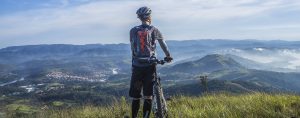Our forest is servicing the desires and needs of humanity. The current world’s population reaches at around 7 to 8 billion. This poses unprecedented pressure on forests, particularly in developing countries at subtropical and tropical latitudes. Believe it or not, there are tons of new paradigms that have been recommended as templates on how to best manage world’s forest in line with human pressure.
As we move forward, we will be focusing on the ideas for better forest ecosystem management and how it can be possibly achieved.
FEM: Is it a Meaningful Idea or just another Buzzword?
Whether you like it or not, there are constantly new ideas, paradigms, buzzwords and social pressures that forestry are dealing with. There’s actually urgent need to establish a clearer definitions of the recommended new paradigms such as FEM and the ability to forecast both environmental and social consequences over long as well as short timeframe. Not to mention, the large and small spatial scales before it is implemented.
Only when we’re equipped with these data where we could have the confidence that the new approaches introduced to forest management honors intergenerational equity concerns.
Forestry is an art. It is something that demands practice, skill, business and science of properly managing forest stands as well as forested landscapes in achieving balance of environmental services and values that are desired by the society and ecologically possible. And as society, we come to understand more what holistic living is and how it can be achieved by integrating the character of forest ecosystem.
The term FEM is growing consistently for the past 20 years. From outset, it’s been defined poorly, is subject to different interpretations and ambiguous.
Understanding the Forest Ecosystem
Forest ecosystems are basically areas of landscape in which trees are dominant and consisting of life forms such as:
- Microbes
- Plants and;
- Animals
All these organisms are interacting with each other to create balance. Forests are more than the community or present population of trees. Forests that have been altered by disease, insects, fire, logging or wind or recently killed are still forests for they have physical and biological legacies from previous forest. If you are pro-environment and want to share the word on how to protect it, you may use YouTube’s platform to share your thoughts through videos and buy YouTube views cheap to make it even more professional.

